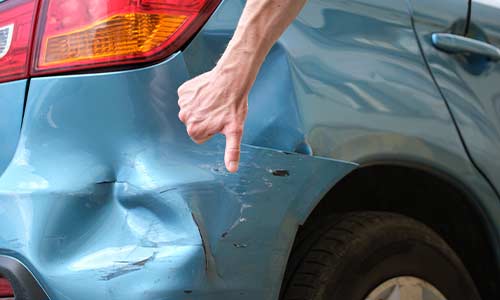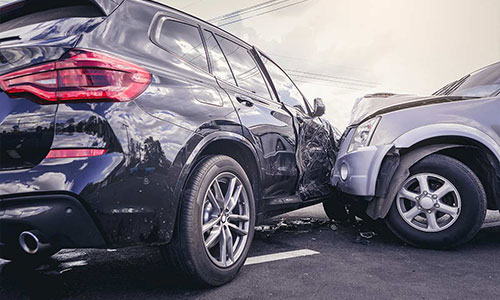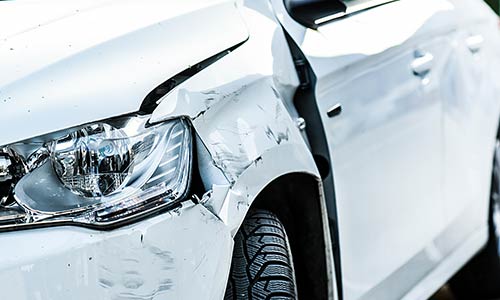
What is Euro NCAP and how safe is my car?
Last updated October 20th, 2023
If you’ve ever bought a new or used car - or even researched the car market, you may have noticed Euro NCAP scores advertised by manufacturers and referenced in reviews.
Euro NCAP is an independent car safety board that was founded by Transport Research Laboratory (TRL) in December 1996. Its voluntary car safety performance programme awards scores between zero and five stars to participating car models.
Since publishing its first test results in 1997, Euro NCAP has carried out rigorous safety tests for many new cars that have arrived on the European market.
In this guide, we will explain how Euro NCAP testing works, how to read their star rating system - and the various safety factors that are currently assessed in their crash tests. Finally, we’ll cover a brief history of Euro NCAP and the new tests they have introduced over the years.
Value your car in under 30 seconds
How does Euro NCAP testing work?
Cars with crash test dummies on board are put through simulations that mimic realistic accident scenarios. For some tests, they also use dummies to represent pedestrians.
These simulations are filmed from various angles and testers observe the impact on the vehicles and dummies. Each car that is tested is scored in numerous categories – and given an overall score based on the level of crash protection it provides for occupants and other road users.
Euro NCAP is constantly revising and improving their testing methods to keep up with ever-advancing car safety technology. The latest set of changes, which were implemented in May 2020 included:
- New tests with a moving deformable barrier to test whether heavier cars pose a significant risk to occupants of smaller cars.
- More stringent testing for autonomous emergency braking (AEB) systems.
- The use of a £600,000 crash-test dummy called THOR (Test device for Human Occupant Restraint) in Euro NCAP tests to provide a more accurate simulation of how human bodies react to collisions - a concept known as ‘biofidelity’.
How to read Euro NCAP stars
-
5 stars This car provides excellent crash protection - and is equipped with powerful crash avoidance features.
-
4 stars – This car provides a good level of crash protection and may also include additional crash avoidance features.
-
3 stars – This car provides an ‘average-to-good' level of occupant protection but lacks crash avoidance features.
-
2 stars – This car provides nominal crash protection and lacks crash avoidance features.
-
1 star – This car provides only marginal crash protection.
-
0 stars – Although this car meets the minimum safety standards to be sold in Europe, it lacks many important modern safety features.
Why do Euro NCAP scores matter?
Euro NCAP tests provide valuable insights into cars’ safety and how they may fare in real-life accidents where the lives of occupants and other road users may be at risk.
Although vehicles must meet certain minimum standards to be sold on the European market, a car with a good Euro NCAP score is likely to provide a higher level of protection in the event of a collision.
Is every car Euro NCAP tested?
No, Euro NCAP tests are still voluntary – and some models on the market are not submitted for testing.
However, Euro NCAP ratings carry considerable weight – and can affect sales. Around 90% of car models sold in Europe have a Euro NCAP rating. Many consumers will factor in crash test safety scores when deciding on their next car.
What is assessed in the Euro NCAP tests?
Vehicle assistance
How well the systems work whilst operating normally.
Driver engagement
- How accurately safety systems are marketed.
- How well the vehicle monitors driver alertness.
- Ease of use for safety features.
- How clear it is whether safety systems are active or inactive.
Safety back-up
How well the systems work in emergency scenarios such as when:
- The driver loses consciousness.
- The system fails.
- A collision is imminent.
Euro NCAP tests: An overview
Euro NCAP tests provide crash safety scores (as percentages), which makes it easy to compare how different models have fared in the same tests. These scores are awarded for each of the following categories:
Adult Occupant Protection
The Adult Occupant Protection rating is calculated based on crash tests simulating the following scenarios:
- Frontal impact (off-set and ‘head-on’).
- Crashing side-on (into a moving object).
- Colliding with a fixed object (such as a telegraph pole or a lamppost).
Whiplash protection and the performance of the autonomous emergency braking (AEB) system are also taken into consideration.
Child Occupant Protection
The Child Occupant Protection score is calculated based on the following factors:
- The level of protection provided by child restraint systems in front and side impact scenarios.
- Provisions made within the vehicle to aid the use of child safety seats (e.g. airbag deactivation systems and ISOFIX child seat anchorages).
Pedestrian Protection
The Pedestrian Protection score evaluates how safe cars are from a pedestrian’s perspective. For this category, testers assess the risk of injury to the head, legs and pelvis from front-end structures such as the windscreen, bumper, bonnet (and bonnet edge).
A car may achieve a higher score in this category if the AEB system can further mitigate injury.
Safety Assist
This score factors in the effectiveness of the driver assistance features that Euro NCAP deem to have the greatest benefit, including:
- Seatbelt reminders.
- Electronic stability control (ESC).
- Lane-keeping assistance (LKAS).
- Speed limiters.
- Autonomous emergency braking (AEB).
Comparing Euro NCAP test scores
Euro NCAP have continuously updated their testing and scoring criteria to reflect advancements in car safety technology. Unfortunately, this can make it difficult to compare the safety of a used car that has been subject to older Euro NCAP tests to a vehicle tested to their modern standards.
A Euro NCAP crash test score remains valid for six years after the car is assessed. After this point, the body states that their testing criteria will have changed so drastically that “its assessment is largely irrelevant in comparison with cars that have been tested more recently.”
During the six-year period after a score is awarded, Euro NCAP performs various reviews to ensure it remains valid. For instance, manufacturers must confirm that they are continuing to fit the same safety technology – and submit details of any facelift changes that might alter their score.
The Renault Zoe was awarded the maximum five-star score when it was launched and tested in 2013. However, before its next test, the French automaker facelifted the car – and removed a side airbag which would have protected an occupant’s head in the event of a side impact.
Euro NCAP also introduced more stringent testing criteria in the interim, which led to the Zoe becoming only the third car in history to receive zero stars when it was next tested in 2021.
Are older Euro NCAP scores compatible with modern standards?
No, an older Euro NCAP rating will not be comparable to its current equivalent score. Today’s Euro NCAP tests evaluate modern car safety technologies such as AEB and LKAS that were not available in the earlier days of testing.
As such, a 20-year-old car that received a perfect score when new will almost certainly provide less crash protection than a modern vehicle.
Thinking about selling your car to make the switch to a safer model? Try our free car valuation tool to find out how much you could get for your old motor.
Other Frequently Asked Questions
You should be able to find the Euro NCAP rating for your car by searching their website.
Most modern safety features are covered in the current Euro NCAP tests.
However, some features such as night vision and Matrix LED headlights that are available with certain higher-end cars are not currently tested, although this may change in the future.
From 2016, some car models have received ‘dual’ Euro NCAP ratings. The first score refers to the base model (with no optional extras) - and the second denotes the vehicle’s safety score when optional safety features are added.
A Euro NCAP rating is valid for up to six years after it is published.
Euro NCAP’s safety requirements become ever more stringent as car safety technology improves. A 15-year-old car that attained a maximum Euro NCAP rating at the time of its release is unlikely to be considered as safe by modern standards. This is why the ratings are only valid for six years.
Car manufacturers are only permitted to promote Euro NCAP scores for their models whilst they are still current. However, the automotive press do not always update their reviews and guides when Euro NCAP ratings expire.
Remember, the Euro NCAP website is your ‘source of truth’ for current crash test scores.
Euro NCAP only tests cars that are sold across Europe. There are other various car safety rating boards around the world including US NCAP (United States), Latin NCAP (South America) - and JNCAP (Japan).
A car’s Euro NCAP rating will influence which car insurance group it is placed into. However, this is not the only factor taken into consideration. Its performance, trim level - and the cost of replacement parts and repairs will also have a bearing on its insurance grouping and cost.





